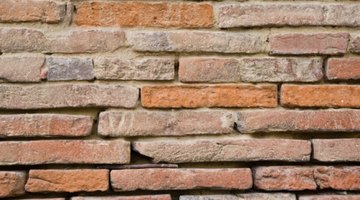What Causes Brick Mortar to Deteriorate?
Table of Contents
Mortar is the material that keeps bricks set to each other. It is a combination of chemicals and sand that is spread across the bricks when they are laid. Although it is a very tough material it is not indestructible.

Through age and exposure it may deteriorate and can cause severe problems to the structure if it is not remedied.
Moisture Expansion
The environmental factors of contraction and expansion are very hard on mortar. This is particularly true if you live in an area with large temperature swings and regular rainfall in the spring and fall. The process begins when water enters into the mortar through a crack. When the temperature falls below freezing this moisture freezes and expands. This force causes the the mortar to deteriorate.
Settling House
As a home settles into the ground over time, the stress is transferred into the structure above it. If the whole house settled uniformly the damage to the mortar might be reduced. Since certain parts of the structure settle differently, this causes stress on that portion. The mortar is one of the weaker joints on the exterior of the house and will begin to crack and peel. When this happens it also allows moisture to enter these cracks.
Warping Wall and Floor Frames
The strength of the mortar can also be affected by the wall and floor frames expanding and contracting. Moisture can also cause the wood to warp, This process takes longer, but it can do the same amount of damage. The other issue is that it allows moisture to enter the damaged areas.
Insect and Other Pests
Burrowing insects and other outdoor fauna can cause an enormous amount of damage. Any insect that has the ability to dig will attempt to dig into the mortar. A small crack gives them access and then they locate areas of least resistance and begin their burrowing. Wasps and bees are capable of this type of damage.
Plants
Vines are a very destructive force to mortar. Vines cling to walls and have small roots that help them hang on the wall. These small gripping roots can enter into small cracks in the mortar. As they grow the roots force the mortar in weakened areas to deteriorate and crack.
References
- oldhouseweb:general masonry inspection
- "Time-Life Books Complete Home Improvement and Renovation Manual"; Bob Vila and Time-Life Books; 1991
- "Complete Do-It-Yourself Manual: Completely Revised and Updated"; Family Handyman Magazine Editors; 2005
Writer Bio
Philip Powe started writing in 1987 for St. Louis area newspapers. He has since written for "St. Clair County Historical Society Journal" and the "American Association of State and Local Historians Journal." Concentrations are in home and garden, philosophy and history. Powe holds a Master of Arts in intellectual history from Southern Illinois University.
Photo Credits
- Jupiterimages/Photos.com/Getty Images
- Jupiterimages/Photos.com/Getty Images
More Articles



